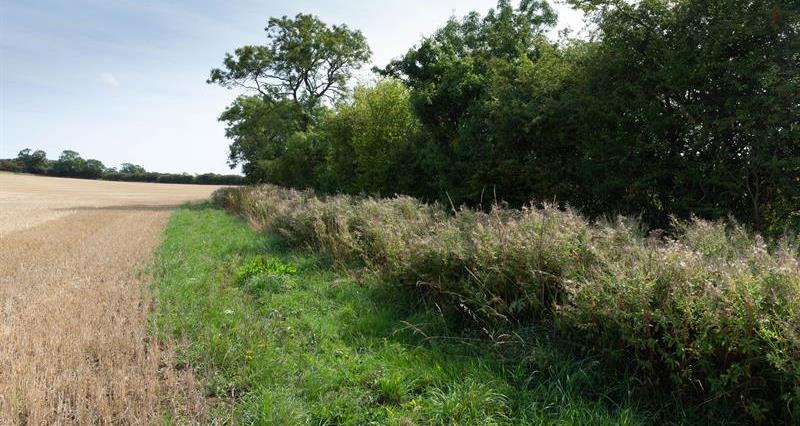The aim:
To increase the number and size of hedgerows to increase carbon storage and sequestration in above- and below-ground biomass.
The actions:
- Grow larger hedgerows
- Plant new hedgerows
- Use hedgerows as a source of wood fuel to replace fossil fuels.
The results:
For the business:
Well managed hedges provide a wide range of on farm benefits including improved pollination through habitat creation, shelter for livestock and reductions in soil erosion. They also intercept pollutants improving air and water quality and can help with flood alleviation.
See Hedgelink for advice on making the best use of hedgerows in the farmed environment.
Savings can be made with reduced flailing. Using wood fuel can reduce energy bills and generate income from the sale of woodchip.
For net zero:
Hedgerows sequester carbon above and below ground, both in woody growth and in soils. Estimates of the carbon stock of UK hedgerows (based upon above-ground biomass) range between about 15 tonnes of carbon per hectare (tC/ha) for short hedges (1.5m height) and 30-40 tC/ha for tall hedges (2.7m), with an similar amount of carbon in below-ground biomass. Hedges across slopes capture eroding soil and can increase soil organic carbon up to 60m uphill.
The carbon sequestration potential of hedges is a relatively new area of study. Different hedgerows will sequester carbon at different rates. CFE is working with Hedgelink and others to quantify exact rates of sequestration. What we do know for certain is that hedges sequester and store carbon, so clarification on exact data should not prevent action. Our advice to farmers is to start growing larger hedges now. As data becomes available this page will be updated.
Action |
Cost |
Time |
|
Grow larger hedgerows - Allowing hedgerows to grow larger and wider will build up carbon stocks. Try and cut every two or preferable three years, and incrementally raise the cutting height. his will also save on labour and machinery costs. |
|
|
|
Restore damaged hedgerows - Unmanaged, over-trimmed or neglected hedges can be restored. The Hedgerow Management Cycle is a useful starting point for hedgerow management. It is a 10-point scale based on the physical characteristics of a hedge. A ‘healthy’ hedge is thick and bushy, with many interwoven branches (point 5 on the scale). Click here for more on hedgerow management. |
£-££/ |
|
|
Plant new hedgerows - It is best to plant along existing boundaries, fill the gaps in any existing hedgerow network or join up other woody and scrub habitats. See Natural England’s guide to planting hedgerows for more information. |
£-££/ |
|
| Allows trees to grow within hedgerows to increase long-term carbon storage. Trees can be marked with tape or coloured rags so hedge cutting contractors know to avoid them. More guidance on trees. |
|
|
|
Use hedges as wood fuel |
|
(10-20 year cycle) |
